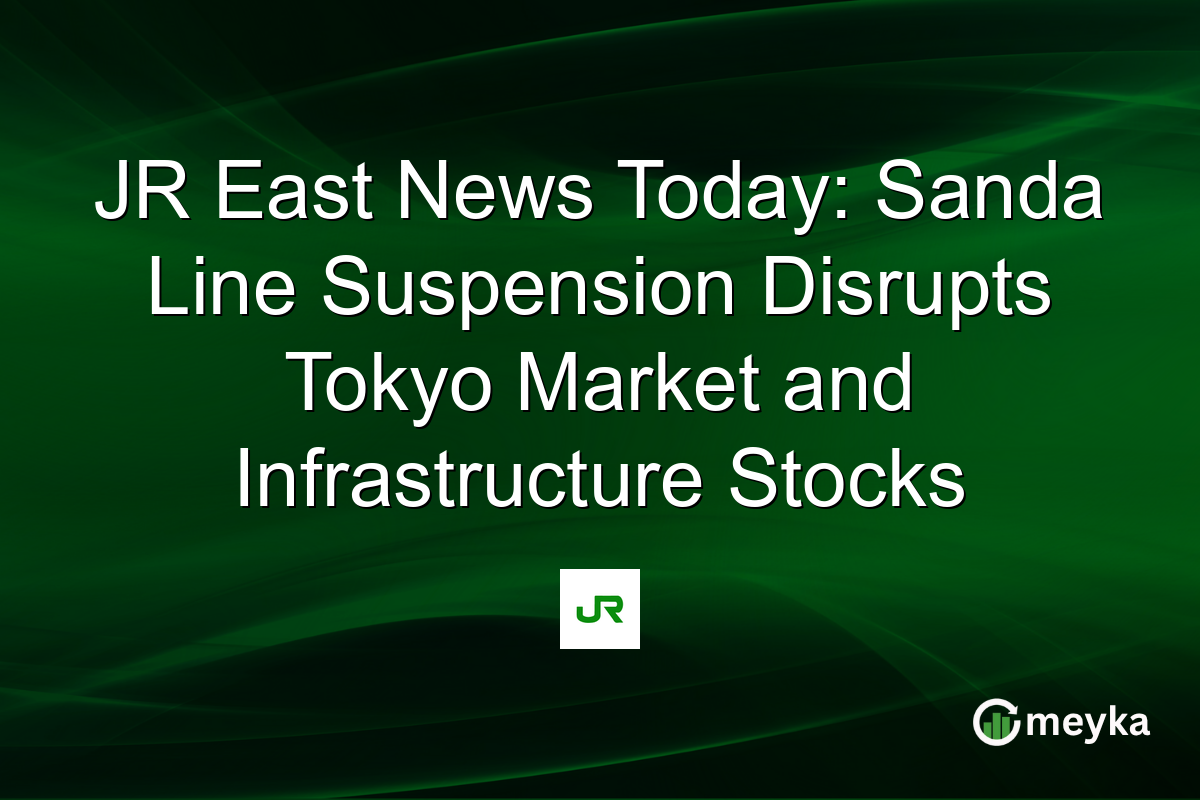JR East News Today: Sanda Line Suspension Disrupts Tokyo Market and Infrastructure Stocks
Today, the Sanda Line of Tokyo’s famously efficient subway system faced a significant suspension due to a track incident, causing widespread commuter disruption. The impact is felt across the city, affecting not just daily commutes but also the financial markets. Stocks linked to the East Japan Railway Company (9020.T) and other infrastructure sectors are experiencing notable volatility. Let’s explore how this event affects Tokyo’s bustling transportation scene and what it means for investors.
The Sanda Line Suspension: An Overview
The disruption on the Sanda Line, part of Tokyo’s Toei Mita Line, has created substantial commuter challenges. Over 300,000 daily passengers rely on this service, emphasizing the severity of today’s outage. The incident reportedly involves a track failure, halting services for the better part of the day. Reported by Reuters, this suspension underscores operational risks inherent in urban transit systems. As authorities scramble for solutions, commuters face significant delays and alter their travel routes.
Market Reactions and JR East
Following the suspension, infrastructure stocks, particularly JR East (9020.T), experienced immediate market reactions. Currently trading at ¥3634.0, JR East’s stock showed a slight increase, up over 1% despite the operational hiccup. Analysts emphasize that such incidents can challenge investor confidence, reflecting concerns over service reliability. Potential repercussions might extend to policy changes in infrastructure maintenance and development investments.
Impact on Tokyo’s Urban Transit Resilience
Today’s Sanda Line issue has sparked debates on the resilience of Tokyo’s transit infrastructure. Given its pivotal role in city life, any hiccup can have widespread economic implications. The suspension has forced alternatives like buses and taxis into the spotlight, yet these don’t quite fill the gap. Yahoo Finance Japan highlights the need for future-proof systems to mitigate such risks. Investors are closely watching for regulatory responses and any shifts in public-private partnerships geared toward transit system upgrades.
Investor Takeaway: Assessing Risk and Opportunity
For investors, focusing on JR East’s stock and related infrastructure industries is crucial. Despite the setback, JR East continues to hold a B rating, suggesting stable long-term prospects amid short-term volatility. The broader implication is clear: investing in urban infrastructure requires a balance between assessing operational risks and potential for growth. As Tokyo explores future enhancements in transit resilience, opportunities might surface in innovative transport solutions.
Final Thoughts
In summary, the Sanda Line suspension today has been a major talking point in Tokyo, highlighting weaknesses in its otherwise esteemed transit system. While the immediate financial impact is evident, with JR East’s slight stock increase, the long-term focus is on enhancing operational resilience and infrastructure development. For investors, the key is to gauge market reactions while exploring opportunities in emerging transit technologies. At Meyka, we provide real-time insights into these shifts, helping investors adapt to evolving landscapes.
FAQs
The suspension caused significant delays as over 300,000 daily passengers rely on this service. Alternative transport struggled to cope with demand, leading to longer travel times.
JR East’s stock (9020.T) saw a slight increase, trading at ¥3634.0. This shows resilience, but ongoing concerns about service reliability might affect investor confidence in the short term.
There’s likely to be an increased focus on enhancing resilience, possibly driving investments into upgrades and innovations to prevent future risks. This could open opportunities for investors in transit technologies.
Despite short-term challenges, JR East maintains a B rating, indicating stable prospects. Future focus on infrastructure improvements could bolster its market position.
Platforms like Meyka offer AI-powered analytics for real-time financial insights, ideal for tracking infrastructure developments and market impacts on stocks.
Disclaimer:
This is for information only, not financial advice. Always do your research.






